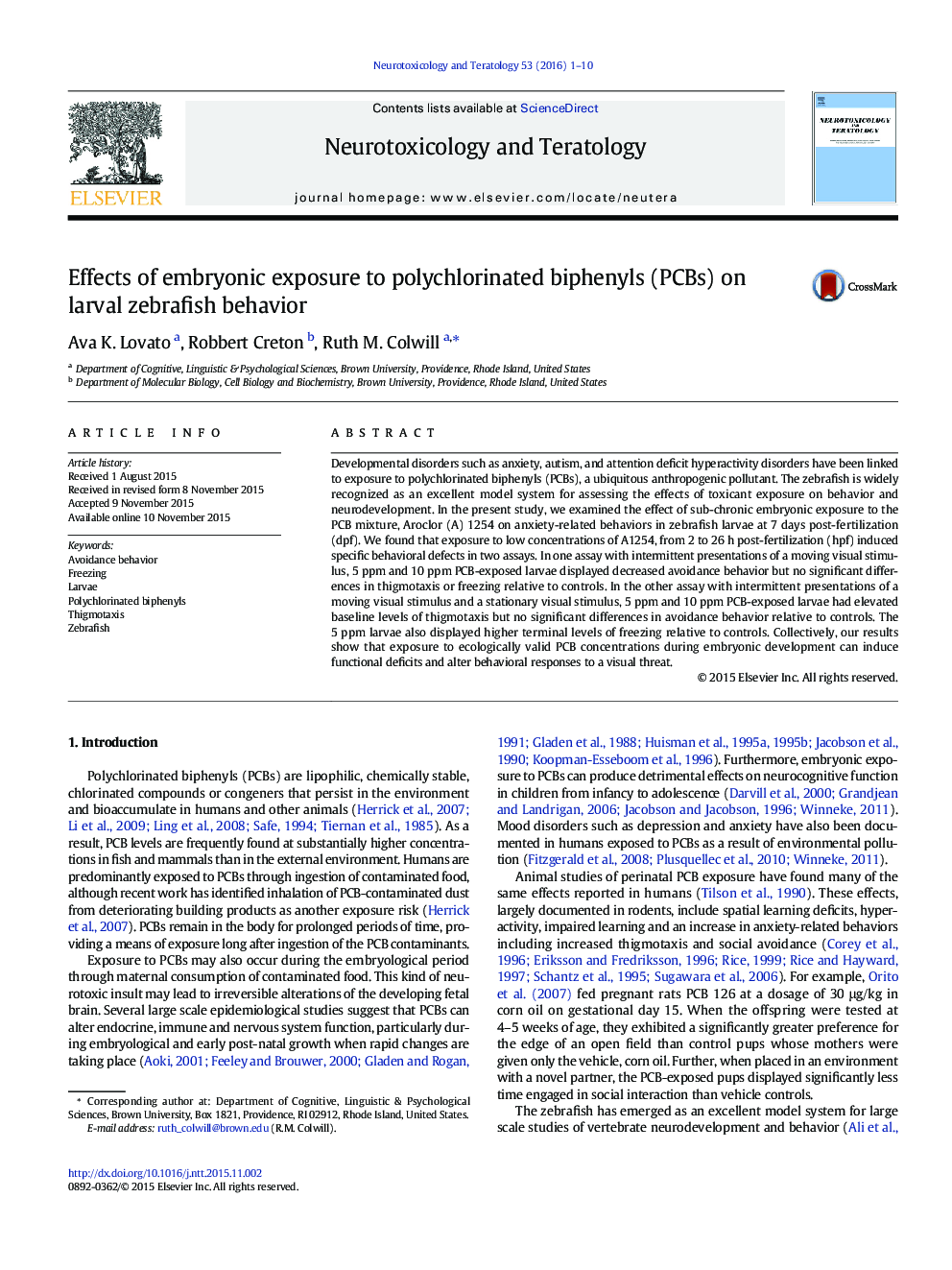| Article ID | Journal | Published Year | Pages | File Type |
|---|---|---|---|---|
| 2590858 | Neurotoxicology and Teratology | 2016 | 10 Pages |
•The effect of Aroclor 1254 on anxiety-related behaviors was evaluated in zebrafish larvae.•PCB-exposure from 2 to 26 h post-fertilization induced behavioral defects at one week.•Defects included decreased avoidance of a moving visual stimulus and elevated thigmotaxis.•Continued monitoring of PCB levels in the environment is essential.
Developmental disorders such as anxiety, autism, and attention deficit hyperactivity disorders have been linked to exposure to polychlorinated biphenyls (PCBs), a ubiquitous anthropogenic pollutant. The zebrafish is widely recognized as an excellent model system for assessing the effects of toxicant exposure on behavior and neurodevelopment. In the present study, we examined the effect of sub-chronic embryonic exposure to the PCB mixture, Aroclor (A) 1254 on anxiety-related behaviors in zebrafish larvae at 7 days post-fertilization (dpf). We found that exposure to low concentrations of A1254, from 2 to 26 h post-fertilization (hpf) induced specific behavioral defects in two assays. In one assay with intermittent presentations of a moving visual stimulus, 5 ppm and 10 ppm PCB-exposed larvae displayed decreased avoidance behavior but no significant differences in thigmotaxis or freezing relative to controls. In the other assay with intermittent presentations of a moving visual stimulus and a stationary visual stimulus, 5 ppm and 10 ppm PCB-exposed larvae had elevated baseline levels of thigmotaxis but no significant differences in avoidance behavior relative to controls. The 5 ppm larvae also displayed higher terminal levels of freezing relative to controls. Collectively, our results show that exposure to ecologically valid PCB concentrations during embryonic development can induce functional deficits and alter behavioral responses to a visual threat.
